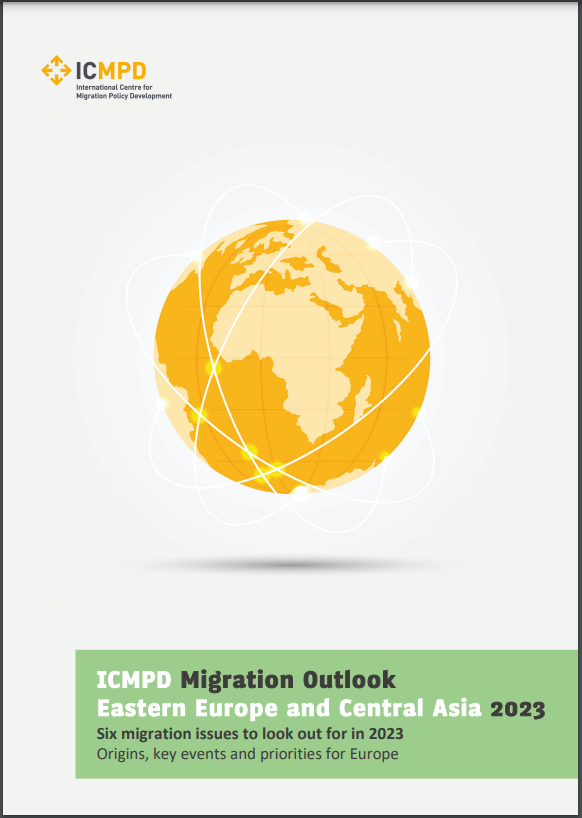The Regional Migration Outlook for Eastern Europe and Central Asia (EECA) presents an analysis of the key events and trends that shaped migration in the EECA region in 2022. Simultaneously, it offers a cautious outlook into areas and issues that may affect migration and mobility to, within and from the EECA in 2023. In a non-exhaustive way, the publication addresses developments in the twelve EECA countries (based on ICMPD’s regional division) – Armenia, Azerbaijan, Belarus, Georgia, Kazakhstan, Kyrgyzstan, Moldova, Russia, Tajikistan, Turkmenistan, Ukraine and Uzbekistan. The analysis is based on ICMPD’s regional expertise and desk research from official and public data sources.
In many ways, 2022 will be remembered as a tragic and unsettling year for the EECA region that saw continued flare-ups between Armenia and Azerbaijan, a reinvigorated clash between Kyrgyzstan and Tajikistan and several protests in Central Asia, all of which led to numerous civilian deaths and increased regional displacement.
On 24 February 2022, Russia launched an unprovoked act of military aggression against Ukraine, triggering an unprecedented massive displacement, considered the largest in the world in early 2023. Almost a third of the entire population of Ukraine became forcibly displaced. By mid-January 2023, close to eight million Ukrainians have fled the country, mostly women and children, escaping to primarily neighbouring and EU countries, and more than six million have sought refuge within Ukraine. Recording a speedy arrival of millions of people fleeing hostilities in Ukraine, on 4 March 2022, the European Union activated the Temporary Protection Directive for the first time in its history, which provided displaced persons immediate access to protection, accommodation, medical care, employment and education. By mid-January 2023, close to five million Ukrainians had registered for temporary protection in Europe, foremost in Poland (31.6% or 1,563,386 persons), Germany (20.7% or 1,021,667 persons), and the Czech Republic (9.7% or 477,614 persons).
Russia’s invasion of Ukraine has cast a long shadow on the EECA countries, with many having to walk a careful diplomatic tightrope given the solid regional interdependence in economic, political and social terms. The countries experienced not only vast economic ramifications resulting from the invasion and the secondary effects of the sanctions imposed on Russia, but also had to face the sudden inflow of thousands of forcibly displaced Ukrainians as well as thousands of Russian nationals who feared military mobilisation, persecution and economic downfall in Russia.
Please access the Outlook in English here.

